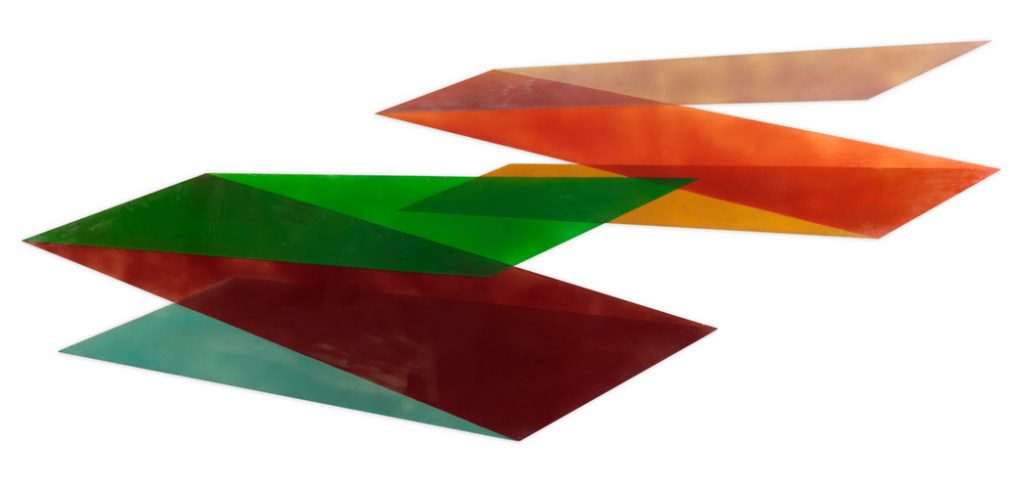Born in Santa Monica, California in 1937, Ronald Davis is widely known for his contributions to twentieth-century non-objective art. Recognized for innovations in painting, his work is concerned with opticality—the idea that we experience art through eyesight alone—particularly how contrasts and interactions of color define two-dimensional, three-dimensional, and digital spaces. Davis describes his work as reflecting “the struggle between object and the pictorial,” as he has worked to expand the boundaries of painting throughout his decades-long career.
In the mid 1960s, Davis sought to further the opticality in art through illusionism, which meant abandoning an abstract expressionist approach and replacing canvas painting with freestanding fiberglass and resin works that are formed using flat planes of color. He moved to Los Angeles during this time as the city became a hub for Minimalism, which had a profound impact on the young artist.
Davis was raised in Wyoming and attended the University of Wyoming in the mid 1950s before transferring to the San Francisco Art Institute, where he majored in painting and studied with leading Bay Area artists such as Fred Martin and Frank Lobdell. His first solo exhibition was held in 1965 at Nicholas Wilder Gallery in Los Angeles, and opened to positive reviews. His popularity among critics quickly became apparent, with art historian Michael Fried, writing in a cover story for Artforum, that his October 1966 solo show at New York’s Tibor de Nagy Gallery indicated his place among leading painters of his generation, alongside Frank Stella and Walter Darby Bannard. That specific show marked his entrance into the New York art world, as it generated a buzz among critics and artists alike. Fried described his resin and fiberglass works as belonging to “the future of painting.”
In 1968, Davis was given an exhibition at Leo Castelli Gallery, one of New York’s most influential art spaces. He lived and worked in Los Angeles until 1972, when he moved to Malibu and designed and built a studio with the help of Frank Gehry, who was relatively unknown then. Davis moved to New Mexico in 1993, and continues to reside there.
His works are held in international collections such as Tate Modern, New York’s Museum of Modern Art, Whitney Museum of American Art, Art Institute of Chicago, and Los Angeles County Museum.

